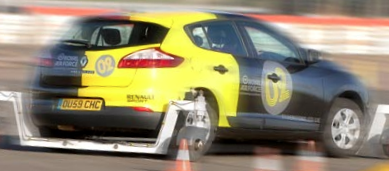We offer intensive, bespoke driver training for those drivers that are taking, or plan to take an advanced driving test or are soon due a re-test. This training is also ideal for drivers who need to pass an advanced driving test as part of their job.
Advanced Driving Tests We Recommend:
RoSPA Advanced Drivers & Riders
IAM Drivesmart
DIA
Although we have no affiliation with the above organisations, many of our tutors, alongside, being registered ADIs (Approved Driving Instructors), have passed their (often very tough) advanced driving tests as part of their continual development as driver trainers.
Our Training:
We offer a range of courses for those looking to take an advanced driving test. We can prepare a driver to be ready to take a test such as RoSPA or IAM thorugh bespoke training.
Option 1: Pre-Test Check. This is a 3.5hr session, designed for drivers who have had the training and are ready to sit an advanced driving test but want a final training session with an independent instructor, to ensure they reach their maximum potential on the day.
Option 2: Refresher Half Day: This is a 3.5hr session for those that have passed an advanced driving test in the past, and are due a re-test in the coming weeks or months, and so want to ensure they are up to the standard expected.
Option 3: Refresher Full Day: This is a 7hr session for those that have passed an advanced driving test in the past, and are due a re-test in the coming weeks or months, and so want to ensure they are up to the standard expected.
Option 4: Full Training: This is designed for drivers who require full training advanced driver training and plan to sit an advanced driving test (such as RoSPA or IAM). This runs over 2 x 7hr sessions, taken at a time convenient to you. We usually recommend at least a week between the two sessions to enable you to practice what has been taught.
Essential Reading:
We strongly recommend you purchase a copy of Roadcraft before any training. The things you will learn during your training and the things you will be assessed on are all covered in this book, chapter-by-chapter. We also recommend purchasing the DVSA Official Highway Code.
Our Tutors:
All our tutors who deliver the training are DVSA (Driver & Vehicle Standards Agency) approved fleet driving instructors, who have passed the RoSPA and or IAM Advanced Driving test, and have many years of experience in delivering driver training for full licence holders.
Why Us:
a. The highest level of training only ever delivered by professional DVSA registered tutors, significantly increasing your chances of achieving the highest grade possible
b. We are experts in delivering professional advanced driver training to private individuals and companies across the UK
c. Bespoke training based on your own needs and requirements
d. National coverage
e. Intensive training to fit with your own needs, requirements and time schedules
f. No need to join a local group
What Next?
Please call us or email rob@driversdomainuk.com for more information and to look at dates for training. You are also free to use the contact form in the upper right of the screen, we aim to reply to email enquiries within 1hr during working hours.

